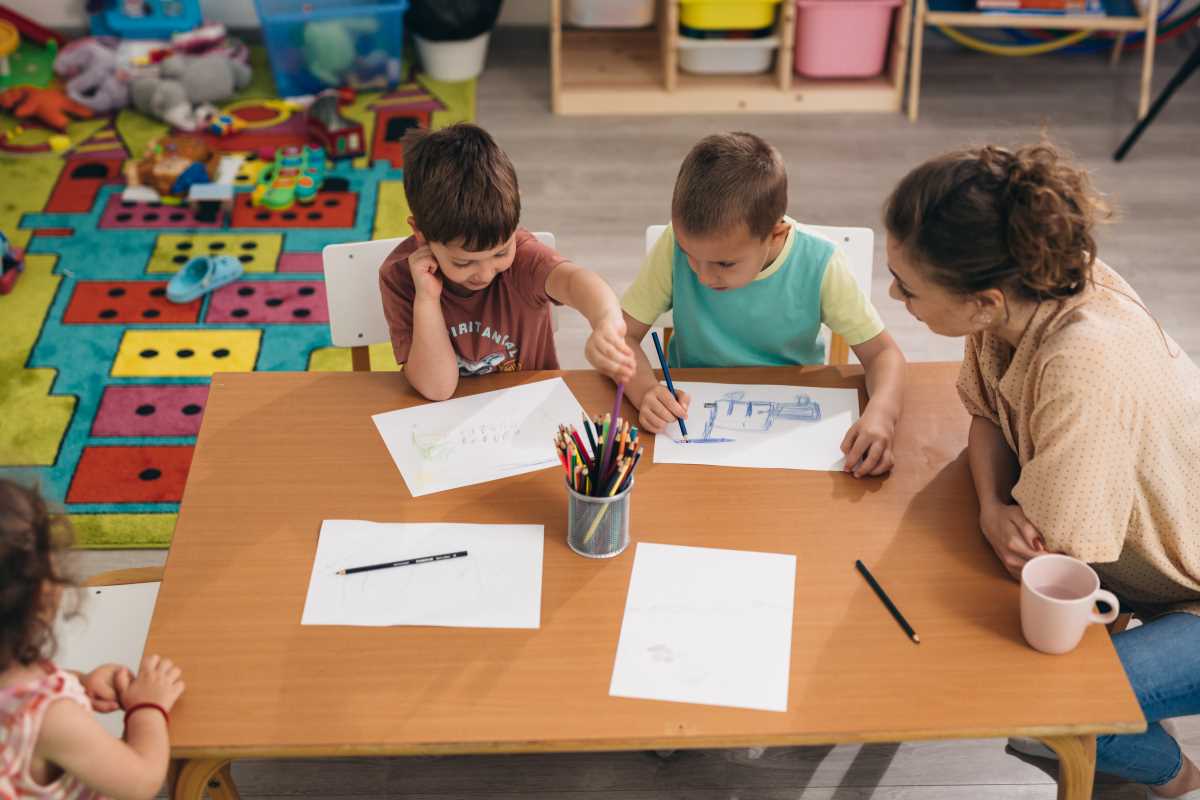Boundaries are essential for healthy relationships and personal growth. For children, learning about boundaries helps them develop self-respect, empathy, and the ability to maintain healthy interactions with others. Teaching kids how to both set and respect boundaries lays the foundation for strong emotional intelligence and equips them with tools they’ll use throughout their lives.
But how can parents help children understand this critical concept? Below, we’ll explore why boundaries are important and provide practical tips to guide parents in teaching children how to establish and respect them.
Why Are Boundaries Important?
Boundaries are the invisible guidelines that define how we want to be treated and how we treat others. They help children understand their feelings, recognize their needs, and protect their well-being. At the same time, respecting others' boundaries fosters empathy and healthy communication.
When a child learns to recognize that it's okay to say "no" if they don’t want to hug someone, they're learning self-respect. Similarly, understanding that a friend might not want to share their toy teaches respect for other people's feelings and possessions.
By teaching these lessons early, parents can help children grow into confident, empathetic individuals who know how to advocate for themselves and value the boundaries of others.
Tips for Teaching Children to Build and Respect Boundaries
1. Use Age-Appropriate Language
The concept of boundaries can seem abstract to children, so it's important to explain it in a way they can understand. For young kids, you might focus on simple and relatable ideas, like personal space. You could say, “Your body belongs to you, and you can say yes or no to hugs or touches.”
For older kids, expand the conversation to emotional or digital boundaries. Explain that it’s okay to expect privacy or to take time for themselves when they feel overwhelmed. Conversations should grow as your child does, always keeping their developmental stage in mind.
2. Model Respectful Behavior
Children learn best by watching you. Show them what healthy boundary-setting looks like in your behavior. For instance, if someone interrupts you during a conversation, calmly say, “I’d like to finish my sentence before we move on.” This models assertiveness without being aggressive.
Additionally, demonstrate respect for your child's boundaries. If they say, “I don’t want to talk about this right now,” try to honor their request and revisit the conversation later. This shows them that their feelings matter, and it teaches them that respecting others' boundaries is just as important as maintaining their own.
3. Discuss Boundaries During Everyday Situations
Everyday life offers countless opportunities to teach boundaries. Use interactions and conflicts as teachable moments. For instance, if one sibling takes a toy without asking, you can step in and explain, “It’s important to ask before taking something. How do you think your sibling feels when their things aren’t respected?”
Similarly, if your child gets upset when their friend doesn’t want to share, use the opportunity to explain that everyone has the right to say no. Helping children connect boundaries to real-life situations makes the concept more concrete and memorable.
4. Teach Consent Early
Consent is a vital part of teaching boundaries. Show your child that they have control over their own body and that they must also respect the choices others make about their bodies. For example, ask your child if they’d like a hug instead of assuming they’re okay with it. If they decline, respect their choice.
At the same time, reinforce the importance of asking for permission before touching others or entering their personal space. A simple approach might be to say, “Before you hug your friend, ask if it’s okay. Some people don’t feel comfortable being hugged.”
5. Encourage Open Communication
Open communication helps children feel safe expressing themselves. Regularly invite your child to talk about their feelings and opinions. For instance, you could ask, “How did you feel when your friend grabbed your backpack without asking?” Validate their emotions and discuss how setting boundaries—like calmly telling someone to stop—can prevent negative feelings.
Also, remind children that they can always come to you for help if they feel that their boundaries aren’t being respected. Knowing they have a trusted adult to support them makes it easier to stand up for themselves in tricky situations.
6. Reinforce Through Positive Feedback
When your child sets a boundary or respects someone else’s, acknowledge it with praise. For example, you might say, “I’m really proud of you for telling your friend that you needed space. That took courage.” Positive reinforcement encourages them to continue practicing these skills.
Similarly, when they respect someone else's boundaries, highlight how their actions showed kindness and empathy. Positive feedback builds confidence and reinforces the behavior over time.
7. Help Strengthen Empathy
Empathy is key to understanding and respecting boundaries. Help your child consider how others might feel in different scenarios. For instance, you can ask questions like, “How would you feel if someone came into your room without asking?”
Teaching empathy also involves showing your child that everyone has different comfort levels. For example, explain that while some people love to share, others might need time to feel comfortable doing so, and both preferences are okay.
Examples of Boundaries in Action
- Home Life: Teach children to knock before entering someone’s room to respect personal space.
- Friendships: Encourage them to ask before borrowing a friend’s belongings.
- Digital Boundaries: Discuss limits for screen time and the importance of not sharing private information online.
- School Setting: Talk about respecting classmates’ choices not to participate in certain activities or games.
These examples show how boundaries play out in various aspects of life, helping children see their significance across the board.
Building a Foundation of Respect and Understanding
Teaching children to set and respect boundaries is an ongoing process. By modeling respectful behavior, encouraging empathy, and fostering open communication, you can guide your child toward healthy, respectful relationships. Remember to be patient—it takes time and practice for children to fully grasp these concepts and apply them consistently.
Ultimately, helping children understand boundaries is one of the greatest gifts you can give them. It prepares them to advocate for themselves, build meaningful connections, and approach the world with respect and compassion. These lessons will serve them well throughout their lives, empowering them to thrive in any setting.







